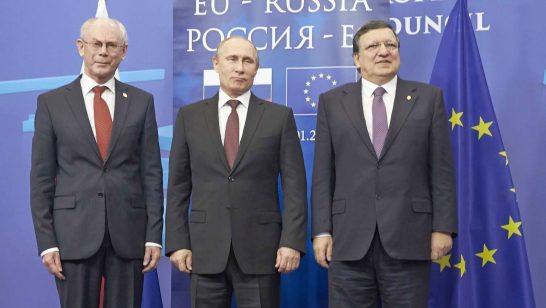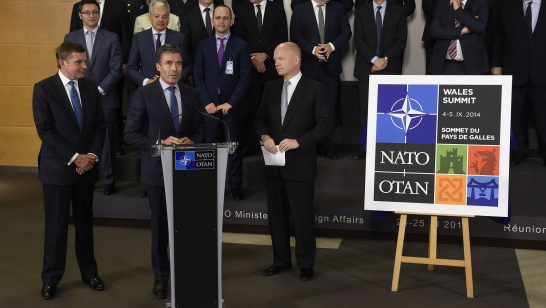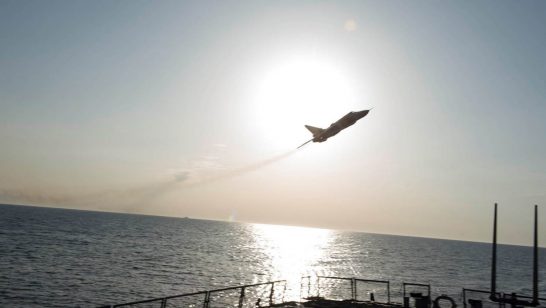
Since the early 2000s, Russia’s stockpile of non-strategic nuclear weapons (NSNW) has become an important factor in most of the arms-control policies of the West. Some East European NATO member-states have also expressed concern with regard to the Russian NSNW arsenal: A concern kept alive by the Kremlin’s unfriendly rhetoric on the issue.
Some countries in NATO have also expressed a desire to see the US nuclear bombs stationed in Europe withdrawn, prompting, along with President Obama’s Prague speech, the Alliance to seek a deal with Russia regarding NSNW in Europe. At the same time, Russia’s arsenal is deemed significantly superior to the US arsenal in Europe – 10 to 1 is the commonly quoted ratio – and is consistently identified as the main obstacle to reductions in the NATO force. As a result, NATO insists on an approach bashfully dubbed ‘the need for Russian reciprocity’.
However, in my recent RUSI study ‘Atomic Accounting: A New Estimate of Russia’s Non-Strategic Nuclear Forces‘ I question the assertion of an enormous imbalance of NSNW forces in Europe. The study produces a verifiable methodology for assessing Russia’s NSNW stockpile. It also analyses data on the geographic distribution of Russia’s non-strategic nuclear forces, a feature which distinguishes it from the other most commonly quoted estimates of the Russian NSNW stockpile by the Federation of American Scientists (FAS) and the Stockholm International Peace Research Institute (SIPRI). The study concludes that Russia has a significantly lower number of operationally assigned and deliverable non-strategic nuclear warheads than previously estimated. The estimate of Russia’s stockpile of operationally assigned non-strategic nuclear warheads is almost fifty per cent lower than the traditional FAS and SIPRI assessments of approximately 2,000 Russian tactical warheads. The revised numbers are presented in Table 1.
Table 1: A New Estimate of Russia’s Operationally Assigned NSNW Warheads
| Warheads in Russian Military Districts | Total Operationally | ||||
| Armed Force | Western | Southern | Central | Eastern | Assigned Warheads |
| Ground Forces | 48-80 | 20-30 | 24-36 | 36-64 | 128-210 |
| Navy | 175 | 20 | 0 | 135 | 330 |
| Air Forces | 210 | 36 | 52 | 36 | 334 |
| Air-Defence Forces | 68-128 | 0-6 | 0-15 | 0-17 | 68-166 |
| TOTAL | 860-1,040 | ||||
When applied to the situation in Europe, this methodology produces an estimate of 500 to 530 operationally assigned strictly ‘offensive’ Russian non-strategic nuclear warheads in Western Russia. The study uses an approach which excludes warheads for air defence, ballistic-missile defence and coastal defence from its count of strike nuclear warheads – a method commonly applied in the US. One could of course question the strike potential that Russian nuclear depth bombs delivered by ship-based helicopters and shore-based propeller-driven anti-submarine aircraft of the Russian Navy could have against NATO member-states territories. If omitted from the analysis the overall estimate of NSNW stockpile in Western Russia would be reduced further still to 450-485 operationally assigned warheads. This number is not dramatically larger than the 180-200 US non-strategic nuclear weapons (and 50 French ‘pre-strategic’ warheads) operationally deployed in Europe. As a result, the study argues that one should not assume the ‘10 to 1’ ratio as a given.
Keeping in mind the considerable inferiority of the Russian conventional forces in Europe, NATO’s demand for deep Russian cuts as the obligatory pre-condition to any NATO NSNW reductions does not seem reasonable. Needless to say, this new estimate has immediate political implications for the arms-control policies of the Western states. *
Additionally, the study applies its methodology retrospectively to check the internal consistency of its estimates against the most reliable statements regarding Russia’s NSNW stockpile at various points in the past. The assessment produces results that correspond reasonably accurately (within a margin of error of 1 to 7 per cent) to the official Russian data published in 1988, 1991, and 2005.
Indeed, the retrospective estimate of Russia’s overall non-strategic nuclear stockpile in 1991 is almost identical to the evaluations presented by the now-renamed US State Department Arms Control and Disarmament Agency (ACDA) for the same year. The ‘Atomic Accounting’ methodology confirms that a 75 per cent reduction of Russian non-strategic nuclear forces occurred between 1991 and 2005, as officially announced by Russia at the Non-Proliferation Treaty Review conference in 2005.
Pursuing an arms-control policy pre-conditioned on major Russian cuts in non-strategic nuclear weapons, when this pursuit is designed to serve the desire in some NATO countries for reductions for other reasons, is likely to be counterproductive. In particular, asking Russia to excessively reduce its non-strategic nuclear warheads and, in doing so, abandon some of the tasks that these warheads fulfil, will prove ineffective. When Russia’s security concerns are taken into consideration, such cuts could be seen to undermine Russia’s security. Given the importance placed on NSNW arms control by the US and within NATO’s Deterrence and Defence Posture Review (DDPR), the possibility that the size of Russia’s NSNW arsenal has been greatly exaggerated should be given serious consideration instead, and the policy implications drawn from this.
If the US and NATO sincerely wish to negotiate NSNW reductions with Russia, they should abandon rhetoric that seeks to paint the issue of non-strategic nuclear arms control in the context of Russia’s ‘massive supremacy’. On the contrary, they should acknowledge the diverse elements of Russia’s stockpile, and consider what they could offer to prompt Russia to reassess its nuclear needs.
* For more information on the numbers included in this section, please refer to the full study: Igor Sutyagin, “Atomic Accounting: A New Estimate of Russia’s Non-Strategic Nuclear Forces”, RUSI, November 2012, is available for download above.
The opinions articulated above represent the views of the author(s), and do not necessarily reflect the position of the European Leadership Network or any of its members. The ELN’s aim is to encourage debates that will help develop Europe’s capacity to address the pressing foreign, defence, and security challenges of our time.



